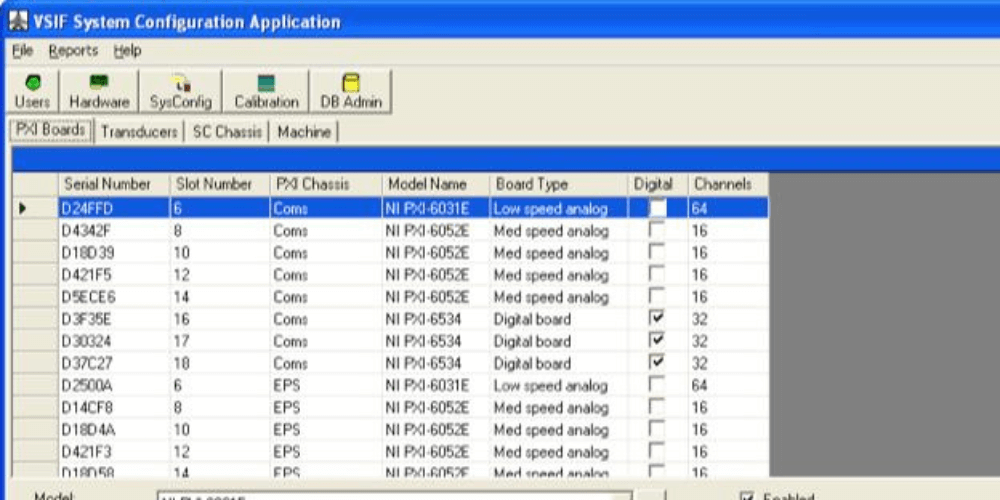When it comes to high-channel-count systems, configuration management needs to be approached at a high level across the whole architecture of the system. The need for a user-friendly and organized configuration management interface is just as important as developing the software to run the tests and view results.
Managing channel information along with all the various configurations the system operates in can be extremely time consuming, especially when trying to do this manually. When dealing with systems that have more than 1,000 channels, using a spreadsheet or text file to edit and store configuration data is just not feasible. Thus, it is best to create tools, such as the one shown in Figure 1, that enable automated configuration management.

Key Features of System-Level Configuration Management Tools
Based on the nearly three decades of experience we have developing high-channel-count systems at G Systems, some of the key features we implement in the system-level configuration management systems we develop include the following:
- User management – Offers different privileges to qualified users, which can prevent unauthorized users from erroneously making changes to a configuration.
- System configuration management – The lab owners and admins configure the scaling of each channel, the name of the channels, which sensors are hooked up, and may even calibrate the channels.
- Bulk editing – Lab owners and admins can select a group of channels and make changes to the common elements of the selected channels simultaneously.
- Configurable user interfaces (UIs) – Engineers typically want to see their data in multiple formats, thus, there is not a standard UI that works for every person in an organization, which means UIs need to be highly configurable for the end user.
- Configuration traceability – Anything that was used to produce test data needs to be traceable, which means the databases used in high-channel-count systems can be extremely complex to retain the complete history of the system.
In short, high-channel-count systems must allow for flexibility and configurability from the highest level – admins – to the lowest level – the individual users. Since developing the tools to seamlessly manage these configurations can be just as complicated and take just as much time as developing the actual test or data acquisition system, it is important to choose the right partner that will help you simplify this development process.
Learn more about how to ensure your high-channel-count systems are designed to be highly configurable and easy to integrate with other systems in your facility in our latest white paper, Three Must-Have Features for High-Channel-Count Test Systems.
